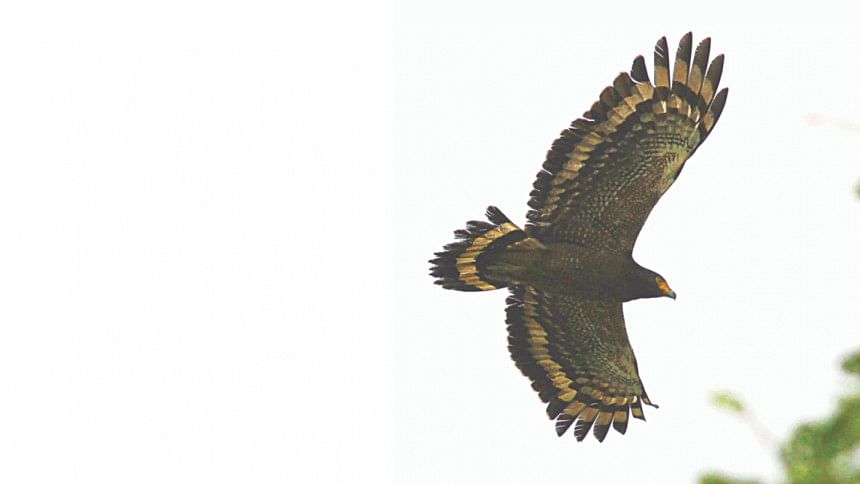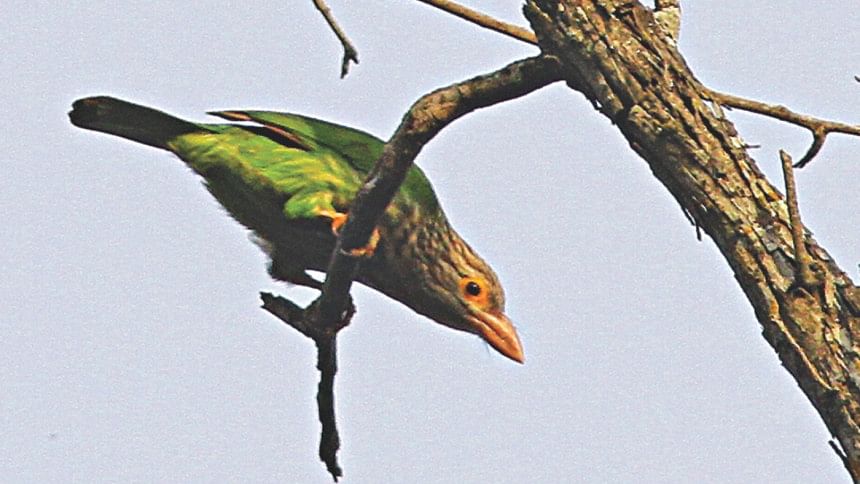Nature Quest: A walk in Madhupur forest

Walking in Madhupur National Park is an activity I recommend to anyone weary of Dhaka and looking for a respite from it. The road to Madhupur is good albeit a little bumpy in places. From the capital you can reach there in about three hours. The forest department has an office at the entrance.
You pay a small entry fee and take a bumpy brick road through the forest. After going 6km into it, you will find a small pond named Gorgora Lake. The brick road threads through the forest further west to the Garo villages.
If you are planning for a day's trekking in the forest, your backpack should be very light and you should carry some food, a water bottle, insect repellant, an umbrella and binoculars. Several dirt roads have branched off the central brick road. You can take any of the dirt roads and trek through the forest. When a dirt road forks, you take the most traveled one. That will keep your return journey easier. You are unlikely to meet another trekker to find your way back.

The forest is safe. There are no large mammals, nearly no snakes. The biggest animal that can attack you here is the leech. They appear only in the monsoon and not in clusters. Mosquitoes will land on you if you rest too long in shade. Your insect repellant will keep both, leeches and mosquitoes, at bay.

The biggest mammals you will see are Rhesus Macaque and Capped Languor. The forest is actually young; 90% of it is formed by 10-15 year old Sal trees, not very attractive to the monkeys. Look up the older Ficus trees (mostly Ficus religiosa) to spot the monkey families.
The largest reptile you will come across there is the Monitor Lizard. The old ones can be very large and remind you of Komodo Dragon. Every encounter with the Lizard, however close, is safe. The Lizard will be far more scared than you and scramble off clumsily for cover.
Encounters with mammals and reptiles will be few and far between in Madhupur Forest. Bird is the wildlife that will keep you entertained the whole day. White-rumped Shama, the most accomplished soprano of Madhupur, will sing sweetly for you everywhere if you move quietly. The loud contralto of the Lineated Barbet will continue to reverberate through the forest. In summer, the cuckoos and the drongos will join this enchanting orchestra of the forest. The crickets and cicadas, you wish, were less insistent on finishing their high-pitched orchestra.
Sights of the avian world of Madhupur are as pleasing as its sound. It is a pleasure to watch troops of Velvet-fronted Nuthatches crawl up and down the large wooly trunks of old trees. They are often accompanied by colourful groups of Small Minivets chirping cheerily and looking for food in the leaves. It is wonderful to be startled by the Black-naped Monarchs darting past you like little blue arrows. More memorable is the undulating flights of Paradise Flycatchers with their long tails fluttering over the undergrowth. Elaborate shows of unusual tails continue above you in the canopy where the Spangled Drongos and the Racket-tailed Drongos defend their territories. If you are lucky you may see Changeable Hawk-Eagle perching on a tall tree.
You may start your return journey by 6:00pm. That ride is unlikely to be as pleasant as your morning ride to Madhupur. But by then you will have the pleasant memory of your day's walk in the forest to fight the tedium of the travel back to the crowd of the capital.

 For all latest news, follow The Daily Star's Google News channel.
For all latest news, follow The Daily Star's Google News channel. 



Comments